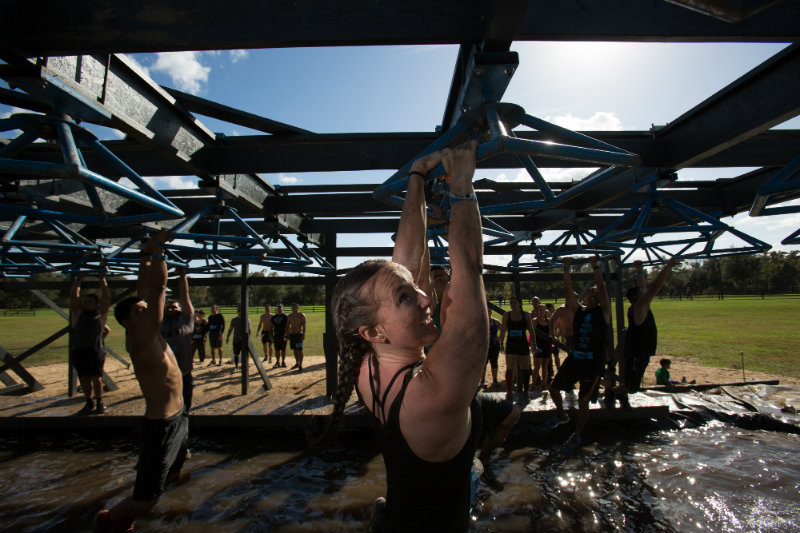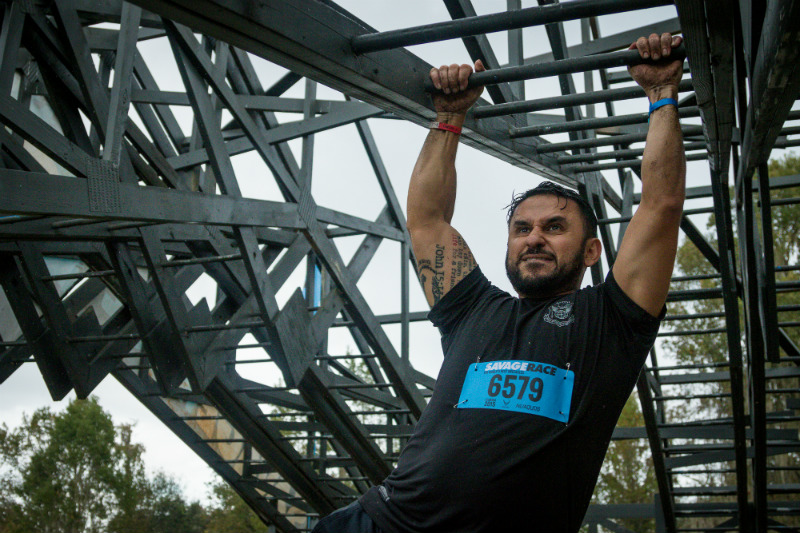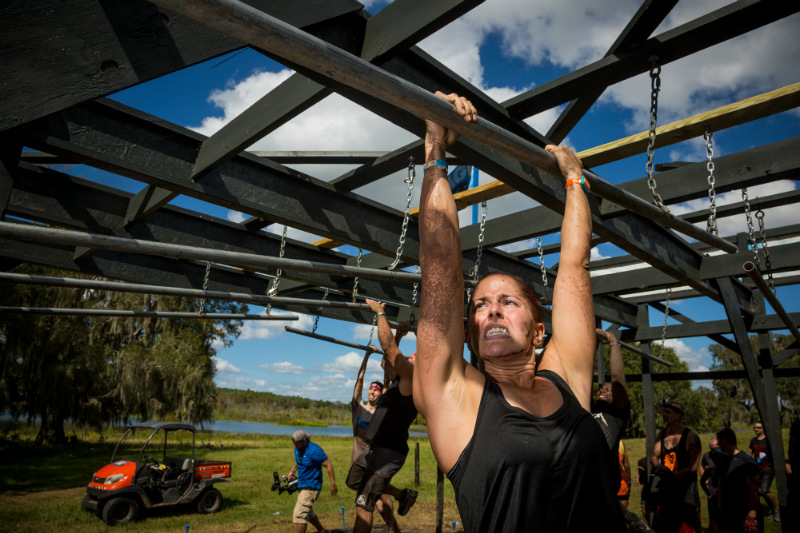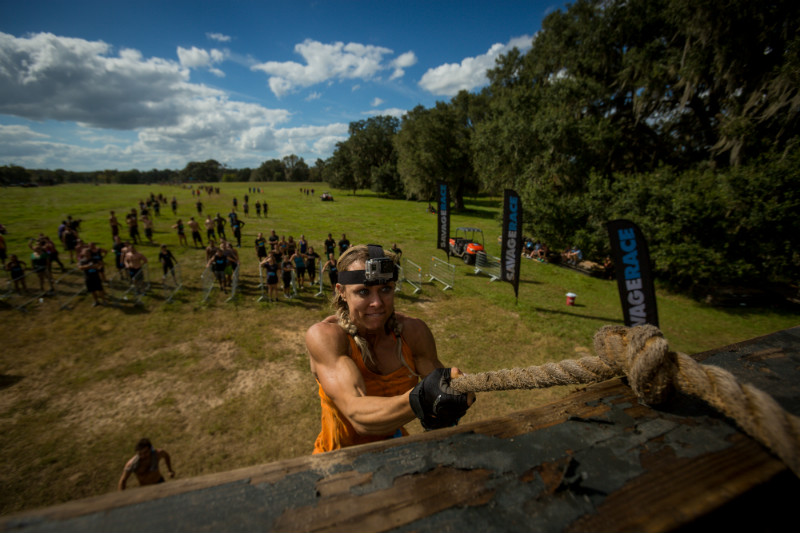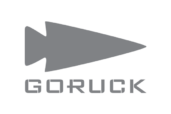5 Pull-Up Variations to Strengthen Your Upper Body & Conquer More Obstacles

For many Savages, the most daunting obstacles on our course include Colossus, Wheel World, Sawtooth, Pipe Dreams, and The Great Wall. So what do they all have in common?
Well, aside from having the lowest completion rates of all our obstacles, they each require tremendous upper body strength to conquer.
You may be able to jump straight off the couch and dominate Davy Jones’ Locker, Shriveled Richard, and many other Savage Race obstacles. But when it comes to the big obstacles that require both upper body and grip strength to tackle, training is key.
Here are five pull-up variations (from most to least challenging) that will help you strengthen your upper body and conquer more obstacles the next time you come out to race.
1) Pull-ups
Arguably the most challenging variation on this list, regular pull-ups are done with your palms facing away from you. Start with a *shoulder-width grip on your pull-up bar. Begin by hanging fully extended from the bar, and then pull yourself up so your chin reaches over the bar. Then, lower yourself down in a controlled manner until you’re fully extended again. That’s a pull-up!
*Note: The wider your grip, the more difficult the pull-up will be. As you get stronger, experiment with extending your grip out farther for an added challenge.
2) Chin-ups
Chin-ups are similar to pull-ups, but your palms will be facing towards you instead of away from you. Less challenging than pull-ups, this variation incorporates more bicep muscles. If you’re close to being able to do pull-ups but you’re just not quite there yet, add some chin-ups to your training regimen. They’ll help you strengthen your latissimus dorsi muscles (also known as your “lats”) as well as your other back muscles, which will help you get better at pull-ups.
3) Negative Pull-ups
Negative pull-ups are a popular progression exercise to help you develop the strength to do regular pull-ups. In this movement, you’ll only complete the eccentric (downward) portion which is the second half of a pull-up. Start with a shoulder-width grip and your chin already over the bar. (You may need to stand on a chair to help you start in this position.) Then, very slowly lower yourself down to a fully extended position making sure you’re in full control the whole time. Negative pull-ups can really challenge your body, so just do a few at first and slowly increase repetitions across multiple training sessions.
4) Jumping Pull-ups
Jumping pull-ups are another good option if you’re still working on developing the back and bicep strength necessary to do pull-ups or chin-ups. For this movement, you’ll want to stand on something very stable like a plyo box that allows you to jump and pull yourself over the bar. (To find the right height, stand up tall and extend your arms fully overhead. You want the pull-up bar to be right in the middle of your forearms when you do this.)
Begin just like you would for a regular pull-up, with your shoulder-width grip and your body fully extended downward. The only difference is that you’ll also have your feet planted on the plyo box. Then, jump and pull yourself up, pausing with your chin over the bar. Lower yourself down in a controlled manner, and repeat.
You can control how much assistance you receive from your lower body, so be sure to remember that this is primarily a pulling exercise and not just a jumping exercise. Focus on letting your back and biceps do as much of the work as they can.
5) Inverted Rows
Known by various names (bar rows, ring rows, etc.), inverted rows are a great beginner’s exercise to pull-up training. An inverted row is done on a bar that is much lower to the ground. (The Smith Machine at the gym is a great place to do these.) Lay down on the floor underneath the bar. It should be set just within reach. Plant your heels on the ground, and pull your body up until your chest touches the bar. Be sure to keep your entire body in tight alignment, like you would if you were doing a plank. This pull-up variation will help you strengthen your upper body without being nearly as challenging as a regular pull-up.
Where should I start?
These five pull-up variations will help you develop the strength needed to conquer the most challenging obstacles at Savage Race. If you’re just beginning your upper body training, a combination of inverted rows, jumping pull-ups, and negative pull-ups is a great place to start. If you’re at an intermediate level where you can do a few chin-ups but just aren’t able to do a lot of pull-ups yet, incorporate jumping pull-ups, negative pull-ups, and chin-ups into your training. And if you’re at an advanced level, continue doing negatives, chin-ups, and pull-ups.
Bonus: Towel Pull-Ups
If you’ve already mastered pull-ups and you’re looking for an added upper body challenge, towel pull-ups are a more difficult option that incorporates some serious grip strength with your pull-up movement. Check out our Colossus workout in the official Savage Race Training Guide for more details.
Comments are closed.



